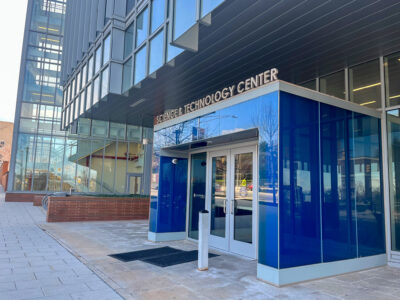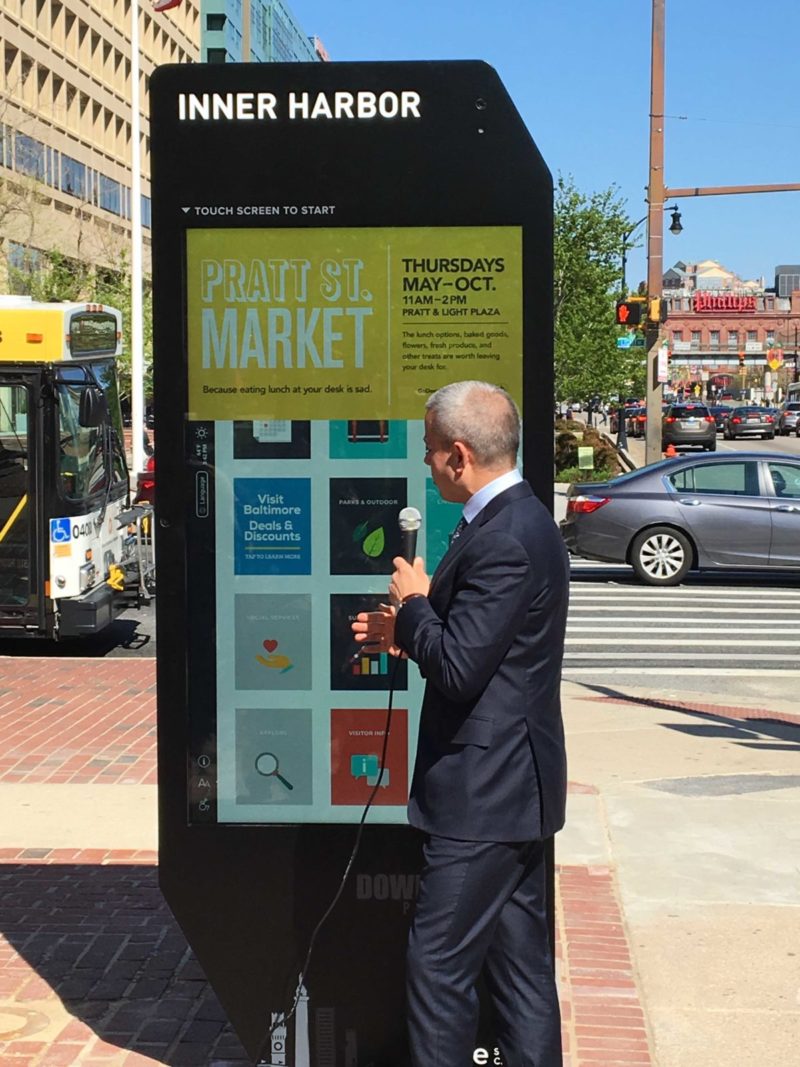Those large kiosks appearing on downtown Baltimore sidewalks are designed to provide info on getting around in Baltimore — and offer a way to take a selfie to remember the visit.
On Tuesday, the Downtown Partnership of Baltimore (DPOB) introduced the “wayfinding and information system.” The tall touchscreen with a digital display on two sides contains apps to help provide navigation and information on traffic and transit. For visitors, it points out places to shop and eat, as well as city services. It can also provide public safety info, and there are air quality monitors.
On the lighter side, the offerings also include games, along with cameras to take those sweet, sweet selfies.
We tested the new @ikesmartcity interactive kiosk today at the #InnerHarbor. Take selfies, find restaurants & attractions and so much more! #baltimore #mybmore pic.twitter.com/OsVIKUDYCW
— Baltimore City Hall (@BaltCityHall) April 16, 2019
Initially, seven of the kiosks will be installed at high-traffic locations, according to DPOB, which gathered a group of partners from city government agencies, nonprofits and businesses to install and launch the kiosks.
The locations include the following intersections:
- Pratt and Light Plaza
- Power Plant
- East Pratt Street and Commerce Street
- Charles Street and Saratoga Street
- East Pratt Street and Market Place
- Cathedral Street and Mulberry Street
- Camden Yards at Paca Street
Among those partners is IKE Smart City, the Columbus, Ohio-based company which makes the kiosks. Baltimore is joining Denver, San Antonio, Columbus and other cities where similar kiosks are installed.
“Baltimore is a rising tech city, and the installation of the IKE kiosk platform reflects that,” IKE CEO Pete Scantland said in a statement. “It’s an interactive portal to everything in the city, available to everyone in the city.”
Partners also included the mayor’s office, Baltimore City Department of Transportation, BGE, Baltimore Heritage Area and LiteCloud.
According to DPOB, there was no public funding required for the kiosk initiative. The kiosks will generate revenue through advertising that can be reinvested into city initiatives, said DPOB Senior VP for Communications and Brand Strategy Michael Evitts.
If there’s an issue, DPOB said it is contracting with a local vendor who can respond within 24 hours in the event of vandalism or a malfunction.
As it looks to get the word out and stock the kiosks with info, DPOB met with organizations in the footprint of the kiosks including Visit Baltimore, the Baltimore Office of Promotion and the Arts, Waterfront Partnership, Historic Charles Street and Maryland Stadium Authority. With any expansion, that outreach will continue, Evitts said. They’re working on additional future locations, but haven’t yet finalized plans.
Join the conversation!
Find news, events, jobs and people who share your interests on Technical.ly's open community Slack

Baltimore daily roundup: Real estate deal in the Peninsula; Missing $100M nitrile glove factory; Dirt bike clampdown

Baltimore daily roundup: Gen AI's software dev skills; UpSurge Tech Ecosystem Report; MD service year program

Baltimore daily roundup: Mayoral candidates talk tech and biz; a guide to greentech vocabulary; a Dutch delegation's visit


